|
We all have them – films which we have had many opportunities to see, so should perhaps have seen by now, films which “everyone” has seen except you. A likely long, long list. And for me La règle du jeu, directed by Jean Renoir, which until the week before I write this I hadn’t seen. In world cinema terms, this film is as sanctified a classic as it gets.
France, the late 1930s. André Jurieux (Roland Toutain) lands after flying across the Atlantic to a hero’s welcome, but he is publicly disappointed that the women he made the flight for, Austrian-born Christine, the Marquise de la Chesnaye (Nora Grégor), is not there to share his triumph. Instead, she is listening to the radio in her Paris apartment with her maid Lisette (Paulette Dubost). Christine is married to the Marquis (Marcel Dalio, billed simply as Dalio) and Lisette is married to Robert’s gamekeeper Schumacher (Gaston Modot) at his country estate, La Colinière. Meanwhile, Robert has a mistress, Geneviève (Mila Parély). André’s outburst is criticised by his friend Octave (Jean Renoir), who promises to sort things out, during a long weekend at La Colinière...
Sight & Sound first published their Greatest Films of All Time poll in 1952 and have repeated the exercise at ten-year intervals since. La règle du jeu (Rules of the Game, but in the UK, unlike the USA, usually known by its titre français) was equal-tenth in that first poll and was the only film to be in the top ten for all seven polls up to 2012 and was still thirteenth in 2022. When a film comes with as much baggage as this one does (see also Citizen Kane, which was number one of every Sight & Sound poll from 1962 to 2002) it can be hard to watch it afresh. That’s particularly so with La règle du jeu, which is a film that does stand up to multiple viewings as there is a lot to unpick.
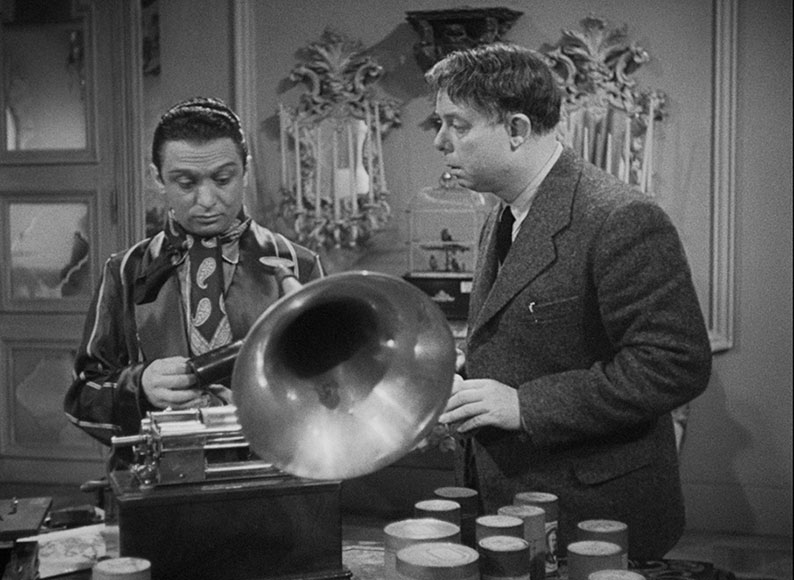
La règle du jeu was however a flop on its original release in 1939. It was an expensive one too, as Renoir had been given the highest budgets for a French film up to that point: at first 2.5 million francs, which doubled during production, partly due to bad weather on its location shoot. This vote of confidence was due to the commercial success of his previous films, including La grande illusion which is its closest rival to the title of Renoir’s masterpiece. It was released at 113 minutes. It was booed at its premiere, with one attendee threatening to set fire to the cinema. Critics were mixed and audiences stayed away. Renoir cut the film, eventually down to 85 minutes, but that didn’t improve the film’s reception. Then in October of that year, the film was banned as being “depressing, morbid, immoral, […] having an undesirable influence on the young”. Renoir then relocated to Hollywood, his first film there being Swamp Water in 1941. The ban persisted for the duration of the War, during which the original negative was destroyed during an Allied bombing raid. La règle du jeu was reissued in 1945 and banned again. However, the short version did begin to be shown in cinema clubs and festivals from 1946 – its BBFC submission in that year has its distributor listed as “New London Film Society”.
It was commercially released in 1950 in both the UK and USA. By then its reputation was growing. When Gavin Lambert reviewed it in the January-February 1950 issue of the Monthly Film Bulletin, he laid his cards on the table in his opening sentence: “Though at first it may appear less seductive than Partie de Campagne or La Grande Illusion, La Règle du Jeu is probably Renoir’s masterpiece.” And that top-ten placing in the Sight & Sound poll was only two years later. The commentary mentions Alain Resnais, who saw the film and walked around in a daze for minutes afterwards, having to sit down and think about what he had seen, his ideas of what cinema could be entirely reconfigured. The commentary wonders what might have happened if his first viewing had been the full-length version – maybe he would have spontaneously combusted? All that was in the film’s short cut. In 1959, the film was reassembled the film to something approaching the original, with Renoir’s blessing. This is the basis of the version digitally restored and released on this disc, at 107 minutes. At least two scenes are known to be missing, but Renoir said that neither was a great loss. Due to the discovery of boxes of outtakes, some scenes were added that had not been in the original version.
The film is an ensemble piece, set mostly during the weekend at La Colinière, with a complex network of marriages, adulteries and dalliances playing itself out. Importantly, none of them are heroic and none villainous. In the most famous line of dialogue, delivered by Renoir himself in character as Octave, we are told why: “Everyone has their reasons.” That’s a humanistic approach that could stand for much of Renoir’s career. La règle du jeu, called a “fantasie dramatique” in the opening credits, is partly inspired by Beaumarchais’s play The Marriage of Figaro (the basis of Mozart’s opera) and there’s an epigraph from that work at the start. Partly inspired by Beaumarchais is the film’s ending, partly brought about by mistaken identities, specifically one woman wearing another’s cape and one man wearing another’s coat.
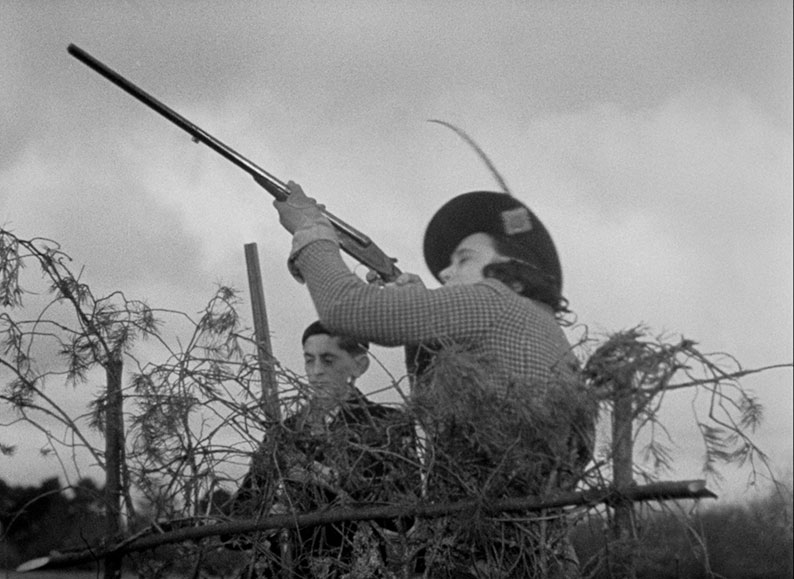
While the film is a comedy, it’s a dark one, as it depicts a section of French society without values, one “dancing on a volcano” (as Renoir put it), about to be disrupted permanently by the War which at this time people knew was in the air: Germany had invaded Czechoslovakia during production. One of the most famous sequences depicts a hunt, in which the bullets cutting down the rabbits and birds presage the mass slaughter to come. The final shot shows the cast reduced to shadows on a wall, ghosts in the making if not already made.
What also made an impact at the time was Renoir’s direction, often filming in lengthy takes with a mobile camera panning and tracking, and using deep focus to stage action on different planes within the frame. Renoir often tried to capture scenes in one or a few shots, so as to preserve the flow of the actors, but the results are cinematic even if you can sense the theatricality behind them. Renoir dedicated his 1959 restoration of the film to the memory of André Bazin, who had been an advocate of this type of staging, so as to leave the interpretation of the scene as much as possible to the audience. Deep focus must have been very difficult given the slowness of film stock available at the time, requiring a lot of light to achieve. It’s a technique often credited to Orson Welles and Gregg Toland on Citizen Kane, two years later, but it certainly didn’t originate with that film.
There is a reason for this film’s eminence over most of its eighty-four years of existence. Any good film is not exhausted on a single viewing, and a great one will sustain many. I’ve seen it three times now, and I certainly haven’t used it up. It’s one of the great works of cinema and one that should be available to see as long as we have ways of seeing it.
La règle du jeu is a BFI Blu-ray release encoded for Region B only. The film was given an A certificate back in 1946 and is now a PG. One of the reasons for that is the “mild hunting scene”, which was done for real, with rabbits genuinely shot and killed on screen. That would not pass muster with the likes of the American Humane Association if the film were made nowadays, but the film has not been cut by the BBFC under the Cinematograph Films (Animals) Act of 1937 – I presume because these are regarded as “clean kills” with the rabbits not suffering.
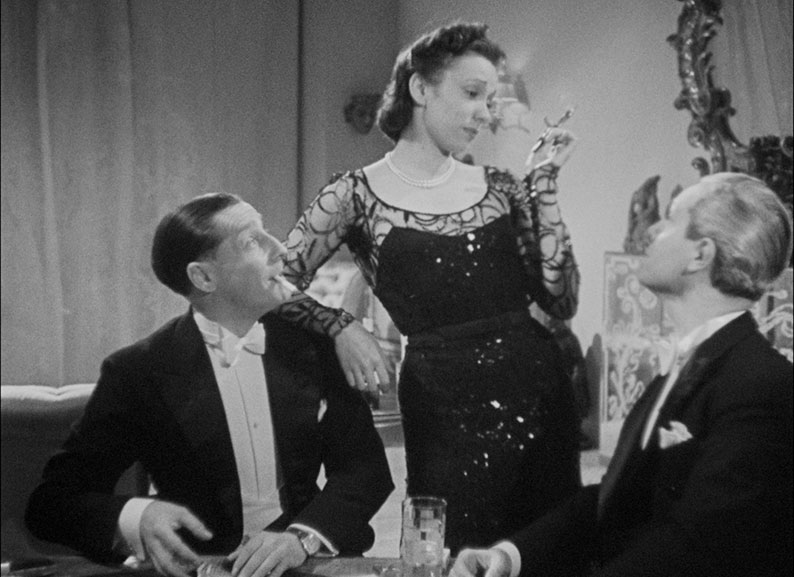
The film was shot in black and white 35mm and the Blu-ray transfer is based on a 2021 4K restoration from a nitrate element, based on Renoir’s 1959 restoration. The transfer is in the correct Academy ratio (1.37:1). The restoration is no doubt limited due to the elements available (no original negative, for one thing) but the results do pass muster, with quite a lot of grain. Reel-change cue dots are visible at the usual intervals. Obviously we can’t see the film as the original audience saw it, at full length on a 35mm nitrate print, but this is as likely as good as we can now, with rather more greyscale than actual blacks and whites.
The sound is the original mono, rendered as LPCM 2.0, restored from a 35mm magnetic element and an incomplete nitrate print. The soundtrack does reflect 1930s cinema technology so the dynamic range is not as wide as a later film’s might be, and some of the top end being a little harsh. The music score is particularly loud at the start. However, it’s clear and generally well-balanced. English subtitles are optional, available for the feature and the two French-language extras.
Commentary by David Jenkins and Trevor Johnston
A new commentary, which does sound like it was recorded remotely. The two lay their cards on the table right away: this is a film which does take multiple viewings to unpick, if you could ever exhaust it. Inevitably you should listen to this after seeing the film, but this should give you plenty of material (maybe if you take notes?) for a subsequent viewing. They pay a lot of attention to the film’s changes of tone, from comedy to drama to tragedy and back again. This might overstate the film’s difficulty, but you might need further viewings to get all the characters and their relationships and motivations straight – even including a gay-coded character, something treated remarkably casually for the time.
Image par image – La règle du jeu (1939, Jean Renoir) (42:34)
This item, written by Jean Douchet and directed by Pierre Oscar Lévy, was made for French television in 1987. British film programming on television has had its ups and downs over the years, but I don’t remember anything like this. It’s old-school film analysis, playing particular attention to Renoir’s mise-en-scène, even down to diagrams as to the way he subdivides the frame so as to enclose (entrap?) characters and demonstrating the camera’s movement on its track and the way it pans left and right, sometimes at the same time. The piece also describes the film’s structure, with fades to black at the end of each section, roughly corresponding to the film’s reels. (That’s 1000-foot camera reels, which run about ten or eleven minutes at the sound speed of twenty-four frames per second, not the 2000-foot reels most likely used for projection prints, six of them usually for this film.) Inevitably this does get very dense, and for obvious reasons see it after watching the film.
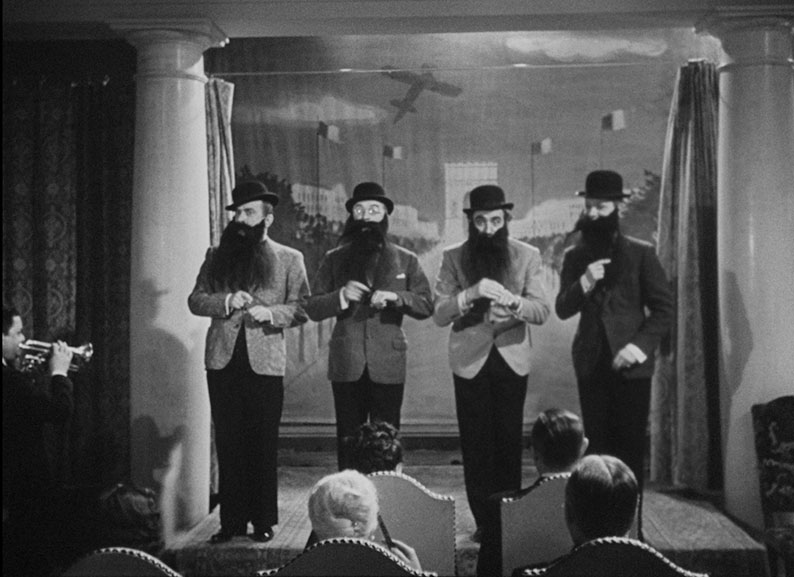
Leslie Caron on La règle du jeu (17:40)
A video recording from the BFI Southbank from 26 July 2016 as part of its Screen Epiphanies series. This is a career overview for the first eight minutes, with Caron talking about her childhood in France and her ambitions to be a classical ballerina rather than an actress, but that changed when she auditioned in Hollywood for Gene Kelly, being cast in An American in Paris as a result. She also talks about her acting career, including her BAFTA-winning role in The L-Shaped Room, and her marriage to Peter Hall. She then goes on to talk about La règle du jeu, a screening of which followed this interview. It was a film that had a major effect on her when she first saw it – what she thought would be a light comedy was something rather more shocking. Inevitably some of this overlaps other extras in this disc, such as her description of the film’s making, suppression, cutting and restoration.
La vie est à nous (64:16)
This 1936 film was made on behalf of the French Communist Party as a propaganda tool against the oppression of the working classes and the rise of fascism in Europe. Some of its targets come in for broad mockery – footage of Hitler ranting has the soundtrack replaced with dog barks. The film was made collectively, with no one credited on screen, but quite a few famous names involved. Along with Renoir, directors included Jacques Becker and Henri Cartier-Bresson and six others, and among the cinematographers Henri Alékan (who had a long career, with a notable late work being Wim Wenders’s Wings of Desire) and Renoir’s nephew Claude Renoir. Jean Renoir was bourgeois by upbringing (the son of a celebrated artist) but his political sympathies were of the left, and he was fêted by the Party in France, hence his involvement in this film.
Pheasant Shooting (1:11)
Society on the Moors (1:17)
Both items from Topical Budget newsreels, from 1913 and 1921 respectively. The first shows the start of the pheasant shooting season in Norfolk, and the second shows similar at the stately home of Lord and Lady Savile in Hebden Bridge. Clearly, the leisure pursuits of the landed gentry served as news items back then, for the vicarious edification of the masses.
Stills Gallery (5:15)
A collection of publicity stills, a poster, a British front-of-house card, and a poster. Some of the stills are oddly printed in sepia, a format I’m not aware the film was ever shown in.
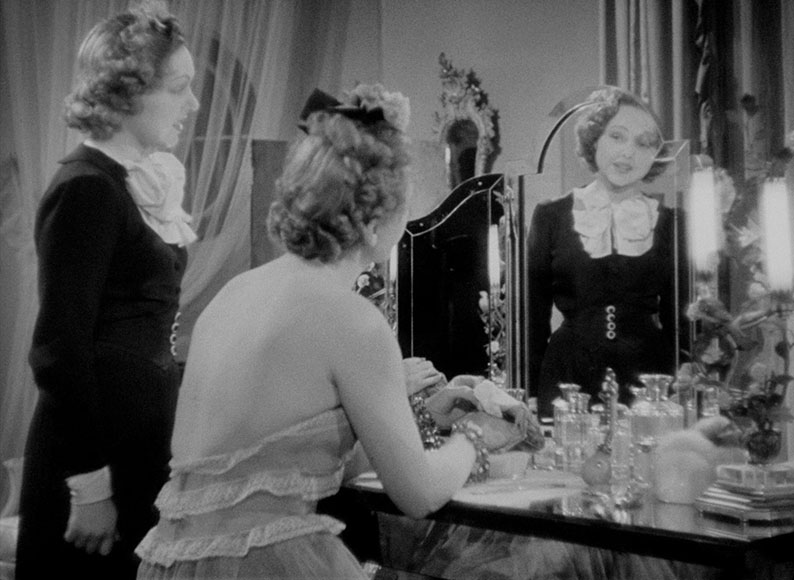
Booklet
The BFI’s booklet, available in the first pressing only, runs to twenty-eight pages. It begins (after a spoiler warning) with “The Rules of the Game”, an essay by David Thompson, whose form with Renoir includes a two-part documentary for BBC’s Omnibus strand and co-editing a book of the man’s letters. This is an overview of the film from its inception, its making and its reception and later restoration. Inevitably much of this overlaps with other extras, but there is some information not found elsewhere, including the anecdote that Renoir was absent from filming the hunting sequence (other than the shots he appears in – which may be explained by the fact that he could not abide the killing of animals) and indeed that the sequence was partly shot by Henri Cartier-Bresson, whose opinions on hunting might be hinted at by the fact that he was a Buddhist.
The other essay in the booklet is an updated version of a piece from the December 1992 Sight & Sound by Ginette Vincendeau. She acknowledges the film’s “difficulty” (compared to the more immediate and more generally popular La grande illusion) and overtly intends to remove the film from all the baggage it has gathered since it was made, and put the film in the context of Renoir and his place in the French film industry of the time. Renoir had begun in the silent era but thrived with the coming of sound, and while with his personal wealth he could afford to work independently to an extent, the expense of film production meant he had to work in the mainstream. Many of his 1930 films were commercial successes. His use of long takes wasn’t exceptional in France, though his use of deep focus was more so. Vincendeau begins by discussing the film’s place in the Sight & Sound polls over the decades, and ends by describing it as “of its time and timeless” and a classic regardless of its poll placing.
The rest of the booklet includes full credits and notes on and credits for the extras, including an essay of La vie est à nous by Barry Nevin, plus stills.
Its status as an all-time classic may make La règle du jeu daunting at first, but its a film which stands up to multiple viewings, and deserves its reputation. It is well served on disc by this BFI Blu-ray.
|